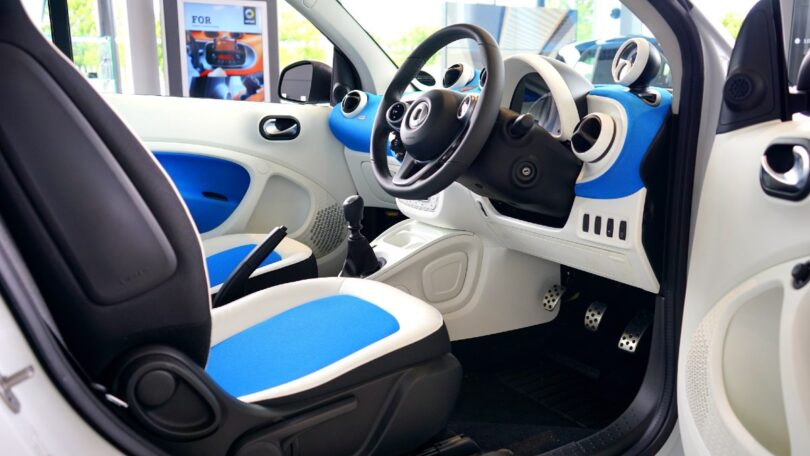The use of polymers as plastics in the construction of automobiles is not a new thing. It has grown tremendously over the last decades. Nowadays, plastics are the second most commonly found material in the case of cars.
Polymers have completely revolutionized the performance, safety, construction, and functionality of cars. The automobile parts made of plastics are resistant to corrosion. Not only this but they also offer flexibility and resilience for added safety.
Plastic parts also have very good thermal insulation. They reduce noise and allow optimum space utilization.
To give you a concrete example in numbers, here is basic research. An average modern car weighing around 1,500 kg contains about 20% of plastic materials (considering thermoplastics and elastomers). This means 300 kg is distributed over 2,000 parts and components of all shapes as well as sizes.
4 Major Reasons to Justify Plastic Incorporation in Automobiles
To dig the reasoning deeper, let’s have a closer look at these four major reasons why plastics are ideal for the car manufacturing industry. The reasons will cover a few most important points in terms of vehicle quality such as:
- High energy absorption
- Cutting down on car emissions hence environmental safety
- Innovative designs and maintenance
- Improved passenger safety
- Shock absorption for bumpers
- Suppression of explosion risks in fuel tanks
1. Plastics Contribute to the Safety of Cars
Plastics play a crucial role when it comes to car safety. For instance, bumpers made of plastics usually weigh 50% less than those made of alternative materials. Some common plastic types are polycarbonate (PC), polypropylene (PP), Acrylonitrile Butadiene Styrene (ABS), polyurethane (PUR), and polyamide (PA) compounded with glass fibers. These bumpers are capable of absorbing four to five times more energy during impact.In addition, durable polyester fiber seat belts, airbags (with high-strength polyamides), and plastic child restraint seats have proved cars safer for road users. Windshields made of laminated glass are shatter-resistant. Credit goes to a thin layer of plastic (typically of PVB or EVAC) sandwiched between two layers of glass. It is much lighter and stronger than tempered glass.
Plastics also improve sound attenuation and filter out most infrared rays. Thus reducing in-car temperature and consequently the use of air conditioning. It is counted as one of the great advantages, especially in hot regions.
2. Plastics Helps in Lowering Total Car Manufacturing Cost
Single mold components have greatly helped manufacturers to decrease vehicle assembly time. Also, the quick introduction of design innovations at lower costs is a plus. A plastic fuel tank made of high-density polyethylene (PE-HD) is inert to the corrosive environments both, inside and outside of the tank.
Single mold components have greatly helped manufacturers to decrease vehicle assembly time. Also, the quick introduction of design innovations at lower costs is a plus. A plastic fuel tank made of high-density polyethylene (PE-HD) is inert to the corrosive environments both, inside and outside of the tank.
A plastic fuel tank also has a key safety feature. This is because it can be manufactured as a single part without soldered seams. Therefore there are no seams to fail in a collision
3. Plastics Advance the Vehicles’ Designs
Designers and engineers are free nowadays to create innovative design concepts. Especially those that enhance the functionality of vehicles.
Paint protection film (PPF) is a thermoplastic urethane film that is slowly replacing traditional automotive paint on some parts of new cars. It is 15 times thicker than traditional paint and more resistant to scratches, chips, and UV degradations. As a result, retaining a high-gloss shine longer than traditional paint.
Gone are the days when vehicle repainting or glossy shine seems a headache. With the new advanced technology depending upon plastic manufacturing, your favorite cars are all set to shine bright like a diamond.
4. Plastics Reduces Car Weight to Great Extent
Last but not least, one of the major reasons is that plastics make cars lighter. Therefore, cutting fuel demand and greenhouse gas emissions. For instance, a reduction of 100 kg in the weight of a modern car leads to a reduction in fuel consumption of approximately 0.4 liters per 100 km. Not only this but also in CO2 emissions of around 10 g per km.
The best thing is overall vehicle weight reduction makes a car not only safer but faster as well as efficient. Your car remains attractive enough in terms of both; price-wise and aesthetically in order to compete in an expanding market.
As a customer, you don’t have to give up at all on any of the luxuries. In fact, plastic use only broadens your options while making more room for the high-tech gadgets you love, both at the same time. What else do you need?
Well, it doesn’t end here. The increasing plastic usage in terms of vehicle manufacturing is far more than your general knowledge.
The plastic used in automobiles also plays a vital role in the making of seat belts, airbags as well as other safety accessories. Some of the most common ones are durable plastic safety seats. Plastic is now declared the safest material for automotive applications. This is because of its application in accessories as well as features like the above.
Take Away
Companies such as www.rydtooling.com have also contributed to many exciting innovations in this field through the use of injection molding technology. This includes key components for electric, hybrid, as well as hydrogen-powered vehicles.
New and modern alternative energy vehicles incorporate advances in battery technology. This is done by using new-generation lithium-polymer batteries. Such batteries are smaller in size and run cooler.
Plastic is also used to create fuel cells that power hydrogen cars. As your favorite hydrogen cars will become more common, the introduction of these technologies will help Europe achieve its goals. The latest 2021 goals revolve around ensuring that 10% of the transport sector must supply its energy needs from renewable sources.
Feature photo by Mike Birdy








